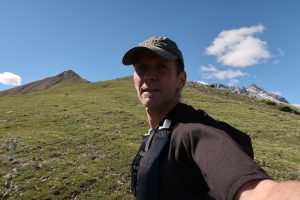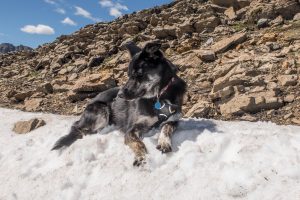“With your knees you should probably not be running”
The memory of the last time I ran a foot race has sunk so deep into the recesses of my brain, that the synapses connecting to it have long died off. I suspect it was in high school. Some Phys Ed teacher probably staged a running contest, or had us run around the soccer field, keeping track of who did the most loops. I’m sure it wasn’t me.
I ran a bit, on and off, here and there, but never liked it. It was hard, and it was hard on the knees. Too many squats during my university days, when six times a week I started off the day with a two to three hour gym session, before hitting the books. I ran on the beach, during lunch breaks at my first job, but not frequently. I didn’t run for a decade and a half after that. I tried again a few years ago, and worked up to a 10K, before the knees started acting up again. “With your knees you should probably not be running”, said the physiotherapist.
How I became aware that there was such a thing as an ultra-marathon, I don’t remember; and how I came to believe that I really needed to run one is a mystery. Being close to some amazing athletes during my biathlon days had changed my perspective on training. It only took a few decades for me to finally realize that there is a whole world of training out there beyond the 20 min mark. One of my former team mates, and later two up and comers in the Canadian biathlon world ran the Canmore Quad, a 50+ km, 15,500 feet underground ultrarunning challenge involving four mountains. I was beyond intrigued.
Then last year I just started running. And reading. Soon I found “Born to Run”. I devoured that book, barely able to put it down. I believed everything, because I wanted it to be true. Anybody can run dozens of kilometers through the mountains. Just proper technique and training. I got religious about toe striking, and started adding the miles. Eleven miles was the first mountain “run”, still in hiking boots. Bought runners, and shredded their soles on Grotto Mountain. Also duly blackened a toe nail on that descent. Soon I did a 19 mile run, including crossing the Elbow river. Running with wet feet is what ultrarunners do; I saw that on Youtube.

Rae Creek Hills – July 8, 2018. All is still well here.
One unhappy Saturday in July things took a turn. I had a big run: 22 miles and 7,000 feet of elevation gain, with some serious off-trail terrain (shredded the warranty-replacement runners’ soles on that trip). At some point if felt a sting in my back, but it went away. I forgot to mention that two years earlier I had received cortisone injections in my back to treat some joint issues. I finished the day, and felt OK. Until the next morning. Something was wrong. I could barely get out of bed, couldn’t stand, sit or walk. More injections, pills, and two weeks of agony ensued. I was done running.

Charlie – who could outrun the wind – having a cool down on a hot day in the mountains. I still miss him dearly.
A month later I bought a mountain bike, and before the fall weather hit I rode my first 100K. But mountain biking isn’t running. It doesn’t have the same freedom. And I still had a pair of barely used new runners, as the second warranty-replacement pair, a different brand this time. By Christmas I was doing short jogs again.
The back hurt, there was no denying. I was doing short 5K “runs”, and whatever was wrong with my bones made me pay every time. I have an extra tailbone, one rogue joint that refused to fuse with his buddies as he was supposed to, and some extra lateral bone growth coming off of it that joined up with the hip bone. That discovery explained the decades of stiffness on that side. But now that contact area is showing some “pseudo-arthritis” – I think it is called that anyway – and that was causing the pain.
Over Christmas I tested myself by running Prairie Mountain, or its equivalent on the hill behind the house) for twelve days in a row. I managed better than expected. (Twelve days of Prairie Mountain)
Then one day I bumped into a friend on the hill. We chatted a bit, and he mentioned a 50km race his wife had done the year before. Not just any 50km, but 50km including 2800m of elevation gain (and loss) in a big loop around Mount Fernie, and adjacent lower hills: the Elk Valley Ultra (Elk Valley Ultra) That sounded like me! Less running on flat terrain, more hiking and climbing, technical terrain, all things that I figured would work in my favour.
But my back still hurt during every run. I consulted with my chiropractor, who had discovered my back problem initially, and asked him if by running I would do more harm. He said no.
I signed up. And I started running. I made a schedule, I had time. Ten percent distance increase per week in for the long run; building in two rest weeks to give the aging body time to catch up to an ambitious mind.
The miracle was happening. As the weeks progressed, the moment that my back would start to protest would come later and later. My schedule had me do a long run of 40K two weeks from the race, and then taper down. A smart gradual increase in mileage, so the body had time to adjust. But I lost faith. I just had to prove to myself sooner that I could a distance like that. I started pushing the long runs, and ended up doing my first run past the marathon distance about 8 weeks before race day.
My body protested. I developed a nagging pain in my left foot. I had no choice but to tone it down a notch or two. As a result I did not do a long run over 12K in a month. The pain decreased but did not go away. With four weeks to go, it was time to gamble. I did a 21K run the one week, and a pretty gnarly 36K run with 1800m of climbing across an exposed ridge the week after.
After three more shorter runs suggested by a taper schedule I found on the net, and struggling through those, I pulled the emergency break. The long run had taken too much out of me, and too many body parts were aching. I needed rest bad, and probably more than I had time left. It wasn’t until Thursday before the race that I started feeling a little better; still too many nagging aches and tight muscles to be confident about a good outcome. But time was up. Time to leave for Fernie.